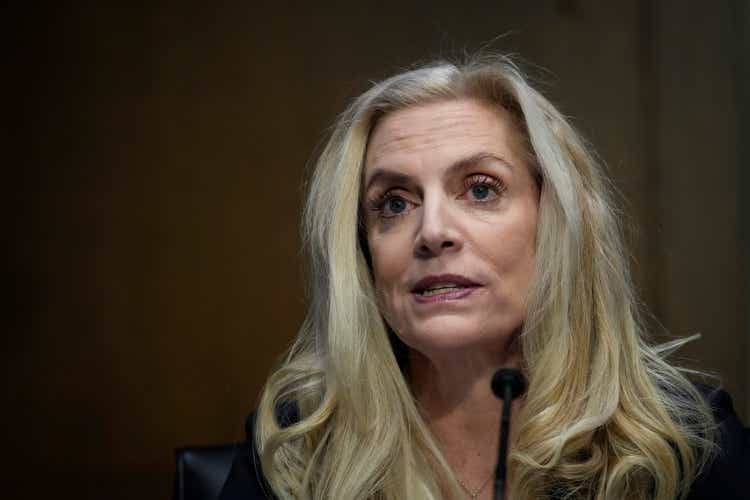
Drew Angerer/Getty Images News
With cryptocurrency and decentralized finance ((DeFi)) platforms “likely to continue to grow and evolve in ways that increase interconnectedness with the traditional financial system… The Federal Reserve needs to be preparing for the payment landscape of the future even as we continue to make improvements to meet today’s needs,” said Federal Reserve Governor Lael Brainard in a prepared speech at the U.S. Monetary Policy Forum.
As part of that process, the Fed has been thinking about whether there’s “a role for a potential U.S. central bank digital currency (CBDC) in the digital payment landscape of the future and about its potential properties, costs, and benefits,” she said.
The analysis needs to evaluate a potential CBDC’s impact on the stability of the financial system. “It would be important to explore design features that would ensure complementarity with established financial intermediation,” Brainard said. Put simply, that means any potential U.S. CBDC wouldn’t compete with the current banking system.
A CBDC could be attractive as a means of payment and store of value to the extent that it’s seen as the safest form of money. However, that could lead to risk-averse users increasing demand for CBDC at the expense of other intermediaries during time of stress, she said.
So it’s important to evaluate tools and design features that could limit those risks, such as offering a non-interest bearing CBDC and limiting the amount of CBDC an end user could hold or transfer, Brainard added.
She also pointed to the rapid growth of stablecoins — digital assets that are intended to maintain stable value relative to reference assets, such as the U.S. dollar. “If current trends continue, the stablecoin market in the future could come to be dominated by just one or two issuers,” she said.
Large-scale redemptions of stablecoins by risk-averse users during times of stress could “prove disruptive to financial stability.” In such a case, CBDCs coexisting with stablecoins and commercial bank money “could prove complementary, by providing a safe central bank liability in the digital financial ecosystem, much like cash currently coexists with commercial bank money,” Brainard said.
Whether a U.S. CBDC exists or not “could also affect the use of the dollar in payments globally in future states where one or more major foreign currencies are issued in CBDC form.”
“A U.S. CBDC may be one potential way to ensure that people around the world who use the dollar can continue to rely on the strength and safety of U.S. currency to transact and conduct business in the digital financial system,” she said.
Last year alone, the stablecoin supply grew almost sixfold to $165B from ~$29B. As of January 2022, the largest stablecoin by market capitalization made up almost half the market, Brainard said, without naming the specific stablecoin.
According to CoinMarketCap, Tether (USDT-USD) currently has market cap of ~$78.7B, followed by USD Coin (USDC-USD), with $52.5B.
Last month, the Fed released its long-awaited CBDC discussion paper listing the pros and cons without taking a stance on any specific policy.
This news is republished from another source. You can check the original article here

Be the first to comment